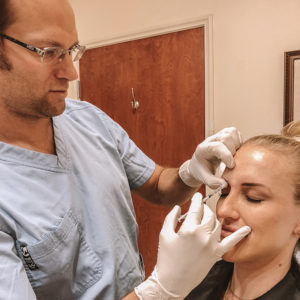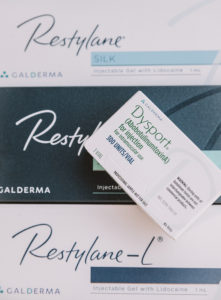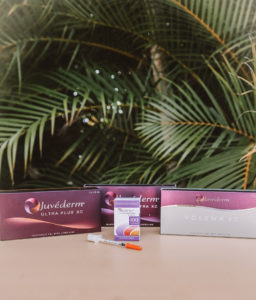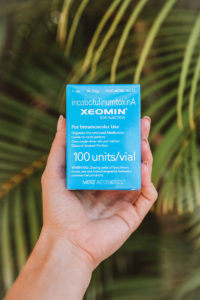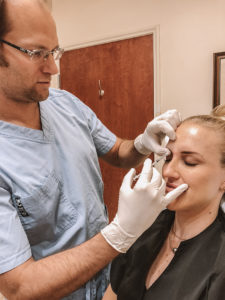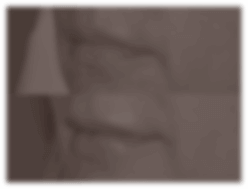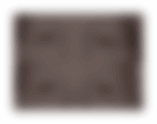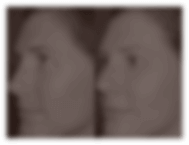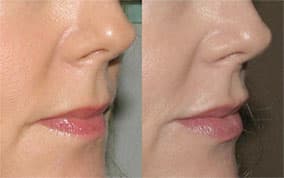Differences and Similarities Between Botox, Dysport and Xeomin

As an injector of neuromodulators of some 13 years now, I’ve had so many patients come to me confused over the similarities and differences between Botox, Dysport and Xeomin. If this is you, wonderful – you’ve made it here – now, let’s clarify this topic for you.
All three products are what are known as Neuromodulators (NM). They essentially “modulate” the function of the motor nerves at the site of the injection. They specifically work where the nerve endings and the muscles communicate at what is known as the “neuromuscular junction” (NMJ). At the NMJ, the synapse of the motor neuron (nerve cell) comes into very close proximity to the muscle it innervates. Let’s consider the frown muscle. Just prior to frowning, a nerve impulse travels down the nerve ending to the neuromuscular junction (actually, many neuromuscular junctions). Under normal circumstances, when the nerve impulse hits the end of the NMJ, it triggers the release of acetylcholine. Acetylcholine is then released into the NMJ where some of it is taken up by the muscle. This triggers the muscle to contract.
When a neuromodulator such as BOTOX is injected, it is taken up by the nerve endings at the NMJ. Once inside the nerve cell, the NM works locally to block the release of acetylcholine. While the NMs (Botox, Dysport, Xeomin) are only in the body for a number of hours, their effects last approximately 3-4 months b/c it takes the nerve ending approximately this long to re-establish communication with the muscle it innervates.
So now we know how these NMs work, what are the similarities and differences? Well, the biggest similarity is that they are all Botulinum Toxin subtype A. Wild-type botulinum toxin is composed of eight subtypes. Researchers originally placed most of their focus on the subtype A as it was discovered to be the strongest. Subsequently, all three NMs only contain subtype A. Another similarity is how they are used. Essentially, anywhere I would inject Botox Cosmetic, I would also inject Dysport and Xeomin. The only difference is placement. Because the zone of treatment for Dysport is a bit larger, I would tend to space out the Dysport more. Some feel that Xeomen is slightly weaker than Botox and Dysport and therefore a slightly higher dose of Xeomin may be recommended at times.
While all the NMs are very similar in that they are the subtype A, they actually all come from different batches of Clostridium Botulinum bacterial colonies. Since the NMs are made by different colonies of bacteria, there are slight differences in the subtype A neuromodulators. There are further differences in exactly what exists inside the vial. In regards to Botox and Dysport, the active neuromodulator is surrounded by complexing proteins as it occurs in nature. Botox has a full complement of complexing proteins and Dysport has a varied number of complexing proteins. This makes many of the Dysport molecule a little smaller and lighter. Xeomin is called a “naked” or “pure” neuromodulator because it has no complexing proteins. It is uncertain if these differences have clinical significance but it appears that Dysport has a larger treatment zone. It is postulated that because it is smaller and lighter, the Dysport molecules can travel further from the injection site. There are some newer studies that show that Xeomen creates less of an antigenic response when injected. That means the immune system is less active after the injection of Xeomin verse Botox and Dysport. As allergy and failure for Botox and Dysport to work are exceedingly rare, the clinical significance of this proposed less antigenicity with Xeomen is unknown. While these opinions are debated, one thing is sure, there are slight differences in how the NMs behave after injected.
When it comes to the number of units injected there are also varied opinions. As Botox has been around for a while, let’s use it as the base for comparison. Most injectors will inject 2-3 times the number of units of Dysport. For Dysport, I recommend using 3x the number of units. This insures that the Dysport treatment will be as strong or slightly stronger than Botox. For Botox to Xeomin, there is a bit more debate. Studies have been published showing one-to-one equivalency for Botox and Xeomin. That is, the recommendation is to use the same units for Xeomen as for Botox. Many injectors, however, will inject 1.2-1.5 X the number of Xeomen units for every 1 unit of Botox.
As for ideal candidates, I use Botox as my Gold Standard to relax away action lines and wrinkles in most patients. I use Botox the most because it tends to have its effects more precisely where it is placed and because I have the most experience with it, as do my patients. If my patients are accustomed to the results of Botox, I tend to continue to use Botox so they get a similar result. As the saying goes, “If it ain’t broke, don’t fix it.” At times, I will use fillers such as Juvederm to “pop-out” resting lines. Patients that I consider the use of Dysport on are younger patients and patients who require many units and/or keep coming back for more in a period shorter than 3-4 months. I consider this approach for two reasons. As I mentioned, firstly, Dysport tends to treat a larger circumference from where it is injected and secondly, because I use a 3-1 ratio of Dysport to Botox units, if anything, Dysport at this ratio is a bit stronger. Because of these two reasons, young patients and patients who require high doses benefit the most from Dysport. Younger patients can benefit from Dysport because there is less risk of brow heaviness that can be seen with older patients with higher doses. Older patients or patients with more brow/eye lid laxity have a higher risk of brow heaviness with Dysport as compared to Botox. I consider using Xeomen on a younger patient who plans to use the product for years to come and likes the concept of “less antigenicity” even though the clinical significance of this is unknown. I would also consider using Xeomen in a patient who wanted small doses every couple of months for the same theoretical issues surrounding antigenicity.
So, now you have the skinny on the similarities and differences between Botox, Dysport and Xeomin. In a future blog, I will talk about how I use these products to create beautiful aesthetic results and other uses.
If you would like a consultation on the use of Neuromodulators (NMs) or any of our treatments in the 6 Pillars of Rejuvenation, give us a call at 808-879-4909 and we would be happy to see you.


